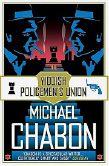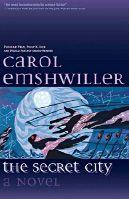Science Fiction: The 101 Best Novels 1985-2010 (47 page)
Read Science Fiction: The 101 Best Novels 1985-2010 Online
Authors: Damien Broderick,Paul di Filippo

This horrible crime promotes Paul to the status of “Prisoner B” at the Hostile Activities Research Ministry, or HARM—in actuality, a torture camp. There, he is subjected to excruciating bodily and psychological—well, harm, to put it mildly. What’s Paul’s one refuge and retreat? Simple: he’s been a dissociative kind of personality ever since youth, due to cerebral damage inflicted by his father’s beatings. Now, he begins to hallucinate an existence on another planet, Stygia, inhabiting the persona of one Fremant.
Stygia was ostensibly settled by a lone human starship at some point in our future, after Earth’s civilization destroyed itself. It’s a grim world whose many life forms all derive from insects. Humanity can still eke out a living, hindered by one other factor: the colonists did not travel to this world as incarnate individuals. Rather, they were stored as quasi-biological personality templates, which, upon landing, were decanted into new bodies. But the decanting went awry, and now the invaders are patchwork Frankenstein monsters, at least mentally. They speak in a kind of Joycean cant, for instance, and have trouble with institutions such as democracy and religion. Of course, this hasn’t stopped them from wiping out the native sentients, the Dogovers.
As Paul’s senseless interrogation continues in London, Fremant embarks on his own quest for meaning, fighting both the planet and the short-sighted stupidity of his fellows.
This novel easily ranks among Aldiss’s finest works, a milestone achievement to a long and splendid career not yet over. It rings changes on many of his long-running themes, and also cements itself firmly into the general sf canon. Essentially, it embodies the famed oriental parable of the butterfly and the philosopher in a gripping account of man’s inhumanity to man.
On the front cover of the first edition of this novel, the one former book of Aldiss’s alluded to is
Report on Probability A
, and that’s no gratuitous reference, however unlikely a selection it appears to be from Aldiss’s whole oeuvre. The scenes in the present-day of Paul’s incarceration (“Prisoner B” recalls the alphabetic monikers of the earlier book’s characters) embody the transparent, objective, almost deracinated, repetitive, I-am-a-camera style of that earlier
Nouveau roman
-inspired book. For instance, Paul’s hazy focus on the fireplace that graces one room where he’s tortured in an old mansion renders the scene as tangible as that outside the reader’s window. Again, the lack of proper affect on the part of the interrogators echoes the earlier book, as does a multileveled ranking of observers (Stygia in this case, versus the voyeurs of
Report
).
But see how far we’ve come from 1968, and not in a good direction: whereas
Report
supplemented its dreariness and stasis and paranoia with eroticism and the possibility of change for the better, now, four decades later we have only cruel mortality and evolutionary regression. Yet perhaps, Aldiss hints, utopian 1968 was the anomaly, and mankind’s baseline condition is this naked aggression and fear. The events on Stygia seem to say so as well.
The Stygian passages also play to the same world-building strengths that Aldiss exhibited in
Hothouse
and the
Helliconia Trilogy
. And of course he’s always been politically engaged, as a book like his
Super-State
shows.
So here we have Aldiss presenting us with a distillation of his wisdom, in very topical clothing.
HARM
also echoes many classics by other writers. First off, of course, we turn to the many dystopian masterpieces (which Aldiss names and discusses in an appended interview). There are also rich elements of Russell Hoban’s
Riddley Walker
in the cracked stories the Stygians tell themselves, as well as Kornbluthian satire on the “Marching Morons” theme. The alien Dogovers could have come out of Michael Bishop’s
Transfigurations
, while the manner in which Paul/Fremant ends up on Stygia, and that planet’s nomenclature, make us think of David Lindsay’s
A Voyage to Arcturus
.
But perhaps the main homage here is one that might go unnoticed: Jack London’s
The Star Rover
, in which a prisoner’s torture sends him on an astral journey.
In any case, Aldiss has succeeded in blending all these strains, personal and genre-related, into a deeply moving meditation on whether humanity can survive its own fallen nature, or is doomed to devour itself.
88
Michael Chabon
(2007)

WINNER
of the Nebula, the Hugo and the Sidewise sf awards, and a finalist for crime fiction’s Edgar, this is a sumptuously witty and entertaining alternative history of Jewish relocation in the early 1940s to a grudging Alaska, the Destruction (with some four million fewer Jews murdered than in our Holocaust), then the atomic bombing of Berlin in 1946, and the eviction of Jews from Israel in 1948. Its reception had been prepared in the literary world by Chabon’s earlier success with
The Mysteries of Pittsburgh
(1988, when he was 25),
Wonder Boys
(1995), the comic book-inflected
The Amazing Adventures of Kavalier & Clay
(2000), which won a Pulitzer, and a prizewinning YA fantasy,
Summerland
(2002).
While some Jews, such as Einstein, managed to escape Germany in the early years of Nazi rule, widespread racism in the rest of the world made it hard to find a new homeland. In our 1940, President Roosevelt considered allowing Jews to settle in Alaska, but this program was successfully blocked by the Democratic Party representative for the Alaska Territories, Anthony Dimond. In Chabon’s counterfactual history, Dimond died in an accident, clearing the way for the settlement of millions of Jews on the western fringes of the then-Territory, around Sitka. But this life-saving gesture has a time limit: after 60 years, at the start of the 21st century, Reversion will return these lands to the USA, and Jews once again will be forced into a Diaspora.
That is a setting fueled for a revival of Messianism, especially among the black hats, or Chasidic Jews. The (imaginary) Verbover sect has clawed its way back from cruel wartime reduction to just eleven members, and under the grossly obese Rebbe Shpilman is now the Jewish equivalent of a Mafia family, armed to the teeth, festering with every manner of crime, but suffused with a belief in the imminent appearance of Messiah. This long-prophesied miracle will bring peace to the world and see the return of the Jews to the Promised Land of Israel, from which they were brutally evicted in 1948. In the murky background, an equally fundamentalist Christian President of the USA is eager to see the Jews return to rebuild the Temple on the Dome of the Rock, since this marks the return of Jesus, and the last days. How these factors entwine and work themselves out is one of the driving forces in Chabon’s mystery, which on the surface seems to be a murder mystery: Who shot and killed a junkie in the sordid hotel where dwells Detective Meyer Landsman, divorced, guilty over the abortion of his son and the suicide of his father (recurrent Abraham and Isaac motifs), in squalor and a haze of booze?
The ghetto atmosphere of this doomed shtetl landscape winds ever more suffocatingly around the narrative as linkages are discovered between the most unexpected players. Yet the mood of the novel is often antic, not remotely gloomy, a sort of Woody Allen handwringing hysteria blended with hard men, and a few hard women, working for high stakes. These Sitkans speak in Yiddish, rendered in a delightfully but always totally understandable skewed English, with occasional lapses into “American” for outbursts of profanity. Their cell phones are Shofars (for the ramshorns used to wake the soul to repentance), their guns are sholems, for the peace work they do, or threaten to do. A familiar greeting is “What’s up, yid?” The wit is exactly what we think of as characteristically Jewish. “He’s a bad man,” Landsman says. “And he always was.” His cousin Berko, with a Tlingit Indian mother murdered in a Jewish-Indian riot orchestrated by his father, replies, “Yes, but he made up for it by being a terrible father.” Landsman and his estranged wife, Bina Gelbfish, now his commanding officer, fall into the same tense, affectionate, exasperated banter. One of the pleasures of the novel is watching these two middle-aged and lonely, abrasive people work their way toward a kind of reconciliation.
Another pleasure is Chabon’s expert guidance through this oddly warped history that is not ours and yet reflects some of the more dismaying tendencies in our own. A failed war in Cuba, which returned its American warriors broken and rejected at home, is an equivalent of Vietnam, but President Kennedy escapes assassination and marries Marilyn Monroe. There is no 9/11 tragedy of the falling towers, but the Holy Land of three faiths is torn asunder by endless squabbles among the Arab and other remnant nationalities; without Israel, without Jews in Jerusalem, one gathers that terrorists and religious ideologues developed other obsessions—but the mad leaders of the USA, driven by dreams of making the Book of Revelation come true, work covertly with radical Jews to create the magical circumstances for a Jewish return (or military invasion) of their Holy Land, spearheaded by the criminal black hats.
It is a rich stew, and so are the aromas of the novel, steeped in cuisines from old Europe, not to mention the Filipino-style donut or shtekeleh: a “panatela of fried dough not quite sweet, not quite salty, rolled in sugar, crisp skinned, tender inside, and honeycombed with air pockets. You sink it in your paper cup of milky tea and close your eyes, and for ten fat seconds, you seem to glimpse the possibility of finer things.” So, too, with the book itself.
Life and death chase each other in the headlong gallop familiar from the
noir
novelists Chabon tips his hat to—Hammett, Chandler—as Landsman is shot at, wounded, stripped, tied to a bed, hurls himself barefooted into snow to make his escape, seeking the killers of his murdered sister and the brilliant chess-playing junkie who proves pivotal to the whole bedlam of faith and crime, corruption and redemption (of sorts), while his cousin Berko is yet again a prospective father, and Landsman and his tribe gain some hopes for their dispossessed future. Aside from the nimble plotting and the mayhem, Chabon’s characters are memorable and starkly individual. This might be the best alternative world novel we’ve seen to date.
89
Carol Emshwiller
(2007)

AT NINETY YEARS
of age in 2011, Carol Emshwiller was undeniably the First Lady of Sf, the reigning female avatar of the genre and its rich, unexhausted possibilities. In small part this status originally derived from the record of her helpmate and muse duties with her much admired husband, Ed Emshwiller, whose large catalogue of paintings (as Ed Emsh) practically defined mid-twentieth-century sf imagery. But by far the larger part of her glory derives from her own writing: robust, adventurous, always sparkling, even at its grimmest. And Emshwiller can indeed at times be as cold-eyed as Cormac McCarthy (Entry 84). Her first short story appeared in 1954 (her complete output is currently being collected in several volumes), and she has gone on to produce these short gems right down to the present. But in the new century she became energized to write novels, and produced two superlative ones, both of which revitalized old tropes.